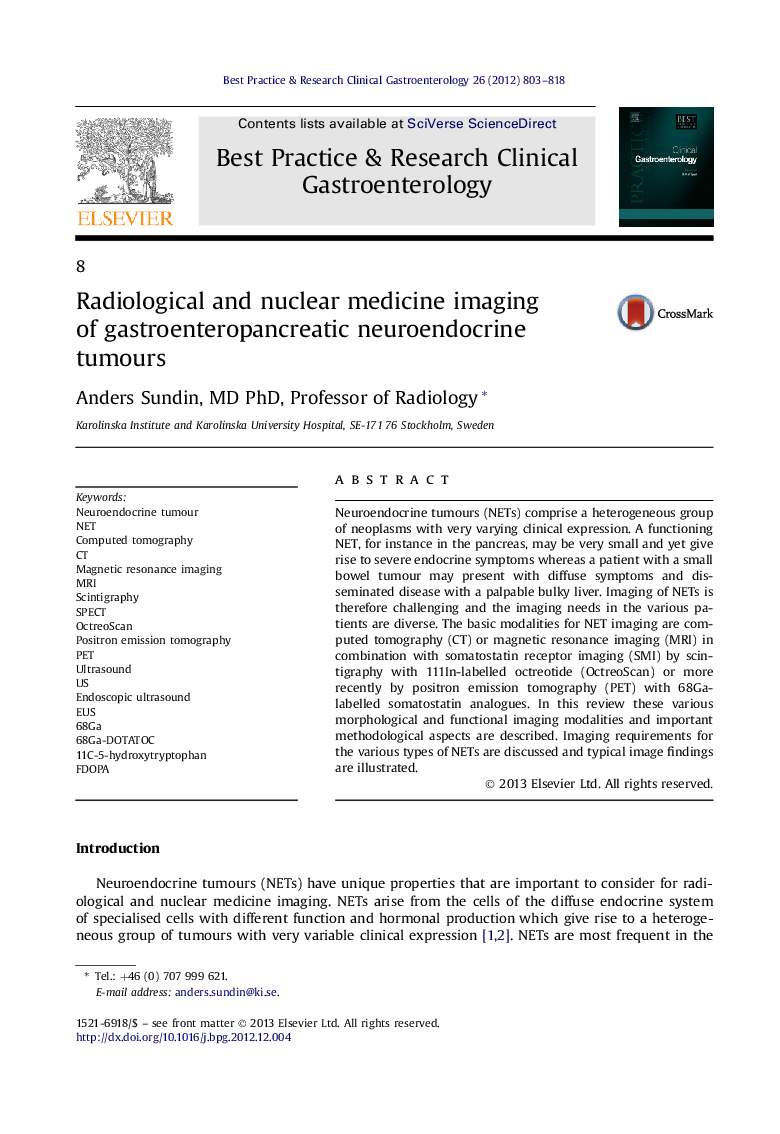| Article ID | Journal | Published Year | Pages | File Type |
|---|---|---|---|---|
| 6086388 | Best Practice & Research Clinical Gastroenterology | 2012 | 16 Pages |
Neuroendocrine tumours (NETs) comprise a heterogeneous group of neoplasms with very varying clinical expression. A functioning NET, for instance in the pancreas, may be very small and yet give rise to severe endocrine symptoms whereas a patient with a small bowel tumour may present with diffuse symptoms and disseminated disease with a palpable bulky liver. Imaging of NETs is therefore challenging and the imaging needs in the various patients are diverse. The basic modalities for NET imaging are computed tomography (CT) or magnetic resonance imaging (MRI) in combination with somatostatin receptor imaging (SMI) by scintigraphy with 111In-labelled octreotide (OctreoScan) or more recently by positron emission tomography (PET) with 68Ga-labelled somatostatin analogues. In this review these various morphological and functional imaging modalities and important methodological aspects are described. Imaging requirements for the various types of NETs are discussed and typical image findings are illustrated.
